2014 AutoGuide.com Truck of the Year

The half-ton truck industry is booming, reporting sales numbers akin to those seen before the gloom of the 2008 recession set in. That also means that many businesses and handy men who purchased a new truck pre-2008 are about ready to trade in for a new workhorse, and automakers are happy to oblige.
In partnership with the Canadian Truck King Challenge, AutoGuide.com put everyone’s new metal to the test. And this was no beauty contest. We had time to experience how every truck handled a 6,000 lb. trailer, hauled 1,000 lbs. worth of payload and dealt with a fairly mud-laden off-road course.
It wasn’t just about driving either. Using one of these tools every day can bring some small annoyances to the surface that a simple test drive may not address, so the hitching process, tie-down points and even the backseat’s ease of use were taken into account.
Fuel economy was also an important part of the challenge and every truck was fitted with a data logger to capture the real-world fuel economy numbers. The information presented here is not from the manufacturers computer read outs; this is info collected straight from the truck.
Ford’s F-150 is the oldest truck of the bunch, though it still outsells all of its competitors. Treating it like the benchmark, it seems like the logical place to start.
First, from the outside, it appears the oldest. Although the truck did receive a refresh in 2009, it continues to carry many of the lines that were introduced in 2004. That said, there is no denying that Ford lead the way design-wise into the current crop of boxy, square-lined trucks.
Four powertrains are available in the F-150; a 3.7-liter V6, a 5.0-liter V8, a twin-turbocharged V6 and a massive 6.2-liter V8. Despite having one of the widest selection of engines in the segment right now, about half of all the F-150s sold in the states leave the dealership with the EcoBoost V6 providing power.
This motor almost single handedly changed the landscape of trucks, testing traditional values with new-age technology, and admittedly, the EcoBoost is nice piece of engineering. It hauls with confidence, providing a robust rush of power when the turbo spools up, providing 90 percent of its torque at just 1,700 rpm.
SEE ALSO: 2013 Ford F-150 Review – Video
Combined with the truck’s chassis, which is still a fully-boxed frame, the EcoBoost powered F-150 feels great on the road, with and without weight on the back.
The love story stops there though, as the F-150 easily proved to be the most frustrating truck to hitch a trailer to. First, the safety chain hook ups are attached at a backwards angle, making it a feat to find just the right angle for the safety chain hooks to fit on. The easiest way we found to fit the hooks is to reach under the truck and navigate it blindly from the back.
Adding insult to injury, Ford still places its trailer light hookups below the bumper, which means more fiddling around close to the ground with dirty connections. Every other manufacturer has moved their hookups higher, which also means less risk of the the whole assembly getting caught on a stump or a rock off-road.
Moving on from the trailer, tying down can be frustrating as well, with only four hitching points in the bed, all of which are located quite low.
Annoyances are plenty when working with the F-150, though there are still some saving graces. The tailgate-mounted bed step offers the most convenience in the industry when it comes to loading and unloading the truck’s bed, and the side-mounted steps just behind the rear doors make getting to the front of the bed a breeze.
The fuel numbers for the F-150 with the EcoBoost actually proved to be surprising as well, matching up almost perfectly with GM’s new 5.3-liter V8. Even when trailering, the EcoBoost’s fuel numbers are slightly better than GM’s.
Overall, the F-150 proved to be the most annoying truck to hitch up to, and provides some of the least convenient tie down points in the bed. Still, its powertrains continue to provide solid performance and the chassis dynamics of this truck are rock solid.
FAST FACTS:
1. Four engines are available: a 3.7L V6, a 5.0L V8, a turbocharged V6 and a 6.2L V8.
2. The F-150 is rated to tow 11,300 pounds when properly equipped.
3. The most popular engine, the EcoBoost V6, makes 365 hp and 420 lb-ft of torque while achieving 16 MPG city, 22 MPG highway.
4. Pricing starts at $24,995, but can reach over $50,000 on luxury-trimmed models.
- EcoBoost
- Rear bed step
- Interior
- Trailer hook ups
- Styling
When Toyota set out to redesign its current truck, the company spent all of its time on the ride, handling, and style, and not so much on what’s under the hood. The engines and transmissions are carryovers, and much like the Ford their age shows, especially on the fuel economy sheets.
While Toyota claims that its engines are on par with other brands when it comes to sucking down petroleum, our test numbers prove otherwise. The Toyotas continue to use the most fuel of the bunch overall, though the Tundra’s 5.7-liter did edge Ram’s HEMI when driving unloaded. Equipped with the 5.7-liter, the Tundra consistently drinks at least 2 to 3 mpg more than the competition when trailering and hauling.
Other updates to the interior and exterior style of this truck are, however, spot on. The Tundra finally looks and feels as nice as its rivals and the interior updates did away with some of the large blocky plastic found in the old truck. Especially nice is the new 1794 luxury trim, which sources its seats and materials from Lexus, providing a classy interior and easily the most comfortable seats that can be found in any half ton today.
On the outside, many of the rounded edges were squared off to make the Tundra appear bigger, a response to customers claiming that the previous Tundra looked smaller than its competition. The hood was raised, giving the truck a new pronounced snout, adding to its new brawnier appearance.
The redesign brought the Tundra new handling and a softer ride, though this truck still feels like the most rigid in the group. Steering is light, perhaps too light, though highway cruising is easy in this truck and requires little input to ensure the wheels stay in between the lines.
Power wise, there in no denying that the 5.7-liter equipped Tundra is a beast. Paired exclusively with a 4.30:1 rear axle ratio, this truck pulls harder than almost any other truck in the pack, matched in feeling only by GM’s new 6.2-liter V8, though that engine makes almost 60 extra lb-ft of torque.
SEE ALSO: 2014 Toyota Tundra Review – Video
The rigidity of the frame combined with that torque-laden power plant is enough to make the 2014 Tundra haul like a champion, sitting flat as can be in every situation.
Tie downs in the bed are also well placed thanks to Toyota’s moveable tie-down rails. The hooks are located high up in the bed and can be moved to wherever they are needed.
The new Tundra is no-doubt a huge advancement over the previous truck, but the fuel economy shortcomings make it a costly choice when compared to some of the fuel-sipping competition.
FAST FACTS:
1. The Tundra can be had with a 4.0L V6, a 4.6L V8 or a 5.7L V8.
2. The 5.7L V8 is good for 381 hp and 401 lb-ft of torque, and is mated exclusively to a 4:30 rear-end differential.
3. When properly equipped, the Tundra is rated to tow 10,400 lbs. and is the only half-ton pickup to fully conform to the SAE J2807 towing standard.
5. The 5.7-liter Tundra is rated at 13 MPG city and 18 MPG highway.
- Torque
- 1794 interior and seats
- Reliability scores
- Fuel economy
- Single rear-end axle ratio
Like Toyota, General Motors rolled out a new truck for 2014, though unlike the big T, the General’s duo, consisting of the Chevy Silverado and GMC Sierra, feature a new trio of powertrains. All three use cylinder deactivation, direct injection and variable valve timing, helping these trucks save fuel.
Fuel economy for GM’s trucks are on par with Ford, and edged out Ram’s big Hemi by a decent margin. But the fuel numbers do come with a price: torque.
GM offers only up to a 3.73:1 rear end, though most trucks will likely leave the lot with a 3.55:1 or a 3.08:1 considering that the big ratio only comes with the max towing package. Don’t get us wrong, with the 3.55 axle the truck handled our 6,000 pound trailer, but at times when climbing hills it felt a little over matched.
Compared directly to ever other brand’s volume engine, the General’s 5.3-liter simply isn’t the strongest. The same is not true of the 6.2-liter engine, however, which offers heaps of power and performance and a great exhaust note.
SEE ALSO: 2014 Chevy Silverado Review – Video
The fuel economy numbers tell a great story for the 6.2 as well, with this big motor achieving only about 1 MPG worse than the 5.3-liter in every area, empty, towing and loaded.
Dynamically, the Chevy and GMC are very comfortable trucks, and provide the smoothest, quietest ride out of the bunch. Nicely weighted steering and a flat, solid chassis make for a confident feeling.
Some very usable features have been built into the interior of GM’s new trucks, from USB charging ports to a 12V three-prong plug, making this the ergonomic front runner in the group for sure. The placement of the trailer brake controller is an example of how GM redesigned its trucks with layout in mind, moving the small pinch-controls up to the left of the steering wheel, an easy place to get to in an emergency.
When it comes to the back end of this truck, trailer hookups offered no issues. The new bumper-integrated bed step is a great feature, offering less hassle than Ford’s bed step, though the Ford step is still an easier way to climb into the bed.
New tie-down hooks have been added to the bed, which now features eight in total; four located low and four up high. New LED lights have also been added out back, helping to work with the truck at night.
SEE ALSO: GMC Sierra Review – Video
Overall, the new Chevy Silverado and GMC Sierra offer a great interior and flat response when trailering and hauling. The small rear-end axle ratios mean that the torque off the line can sometimes feel a little lackluster, but the trade off, and the gamble GM is taking, is that fuel economy will be more important to the consumer.
FAST FACTS:
1. Three engines are offered: a 4.3L V6, a 5.3L V8 and a 6.2L V8 all with direct injection, cylinder deactivation and variable valve timing.
2. The volume 5.3L makes 355 and 383 lb-ft of torque with a 16 MPG city and 22 MPG highway rating on 4×4 models.
3. Max tow rating for the 5.3L is an industry best 11,500 lbs when properly equipped.
4. Starting at $24,585, models like out LTZ tester ring in at over $50,000.
- Bumper-integrated bed step
- Interior electronics hookups
- LED bed lights
- No 4.10 rear-end option
- Low torque from 5.3L
Though it appears almost the same this year, the Ram has received a host of improvements which have propelled this truck to the top of the pack.
First, the folks at Chrysler added an eight-speed automatic transmission and four-corner airbag suspension, which alone make it a great workhorse. Not stopping there though, the Ram can now be had with a small 3.0-liter diesel, and is currently the only half-ton on the market to offer such as engine.
So how do these three new technologies work? For starters, the airbags offer conveniences that can’t be found elsewhere. Automatic leveling helps keep the composure of the truck flat at all times, and acts as an equalizing hitch when a trailer is hooked up. That means that the weight is distributed better between all of the wheels, keeping the steering strong and confident at all times.
The airbags can also raise the truck up two inches, or drop it by two inches, nice for parking in an underground lot, or taking this half-ton off road.
Next, the ZF eight-speed transmission. While Ram led the way with the addition of two extra cogs, look for the rest of the industry to follow. The transmission is so well implemented in this truck that there doesn’t seem to be any downsides. Low-end gears feel meatier because of the short gear ratios and the high-end gears are made to be tall returning solid fuel economy on the highway. Granted, this truck is shifting more often than any other, but the shifts are smooth and hunting for gears never seems to be an issue.
SEE ALSO: 2014 Ram 1500 EcoDiesel Review
A Hemi-equipped truck with airbags and an eight-speed is a solid package, but Ram has finally answered the prayers of truck enthusiasts everywhere, bringing in a 3.0-liter diesel that pumps our 420 lb-ft of torque.
This motor, in comparison to the EcoBoost, GM’s 5.3 and the Tundra’s 5.7, feels right on par off the line, with the low end torque of the diesel pulling like a V8, even with a trailer hitched on the back. Ram also did an exceptional job keeping the cabin quiet, with the diesel rumble only truly piercing the cab at low speed. The one, and really only downside, is the little 3.0-liter loses some of its bluster at high speeds.
But, the real hero story of this motor is the fuel economy. The diesel consistently returned around 3 MPG better than every other truck tested, whether it was empty, loaded or towing. No compromise was made to the power and the fuel numbers are stellar.
On top of all that, a useful interior is found in the Ram, offering one of the most elaborate luxury trucks with the Laramie Long Horn, but also offering no frills base options that are put together simply but offer an easy to navigate cabin. Especially nice is the info cluster screen that has no background or unnecessary graphics, keeping the gimmicks out to deliver the important info right to the driver’s eyes.
One more factor that needs to be taken into account is price. You need to drop at least $30,000 to pick up a Ram diesel, making it a few thousand dollars more than other V8-powered, base-level trucks. So, in buying this truck, you will sacrifice some horsepower that you could have gotten elsewhere for the same or less money, but if lots of highway miles with a trailer are part of your intended pickup truck use, then the diesel will pay for itself over time thanks to all the fuel you won’t be using.
Overall, the Ram 1500 3.0-liter diesel offers the best overall package of any other truck on the market today, which is why we are naming it the 2014 AutoGuide.com Truck of the Year.
FAST FACTS:
1. The Ram 1500 can be had with a 3.6L V6, a 5.7L V8 or the new 3.0-liter diesel.
2. A four-corner air suspension and eight-speed transmission are available.
3. Pricing starts at $23,585, with out tester ringing in at just about $40,000.
4. The RAM 1500 is rated to tow 10,450 pounds when properly equipped.
5. Equipped with the 5.7L V8, the Ram is rated at 15 MPG city and 21 MPG highway.
- Airbag suspension
- Eight-speed transmission
- Diesel power
- Ram Box is expensive
- Trailer brake controller position
Not to take anything away from the Ram 1500, but it almost has to be our Truck of the Year. A diesel half-ton has been on the forefront of truck enthusiast’s wish lists for years now, and Ram has put together a great package with few flaws.
Without a doubt, every single one of these trucks will work hard, confidently, on a daily basis. The 6,000 lbs that we had hooked up wasn’t nearly enough to push any of these trucks around, with all four of them feeling confident.
The real key is finding the right package for suiting your needs. Want a convenient bed step? Buy a Ford. Want low-end torque? Buy a Toyota. Looking for a mobile office with space for all your stuff? Pick up a Chevy. But if highway miles are your thing, the new 3.0-liter diesel equipped Ram is the best option.
In general the Ram 1500 lineup is built to get work done and look good doing it. Innovative and advanced, it’s economical with the gasoline V6, a real work-horse with the Hemi and it’s just perfect with the new 3.0-liter EcoDiesel engine.
FUEL ECONOMY: Testing included evaluation of five different models and 12 different trims. Below is a detailed look at each truck’s fuel economy when driving unladen, with 1,000 lbs of payload and when towing a 6,000 lb. trailer. Half of the test loop consisted of gravel roads, while the other half was paved highway.

Stephen covers all of the day-to-day events of the industry as the News Editor at AutoGuide, along with being the AG truck expert. His truck knowledge comes from working long days on the woodlot with pickups and driving straight trucks professionally. When not at his desk, Steve can be found playing his bass or riding his snowmobile or Sea-Doo. Find Stephen on <A title="@Selmer07 on Twitter" href="http://www.twitter.com/selmer07">Twitter</A> and <A title="Stephen on Google+" href="http://plus.google.com/117833131531784822251?rel=author">Google+</A>
More by Stephen Elmer




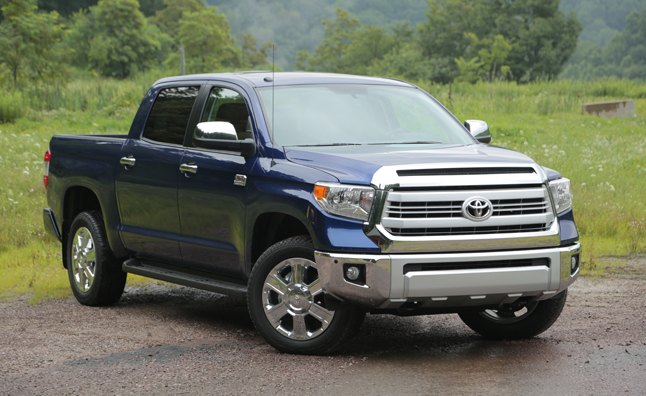



















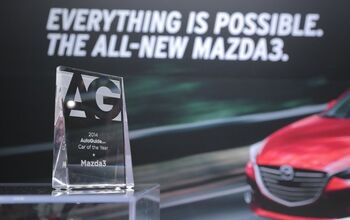
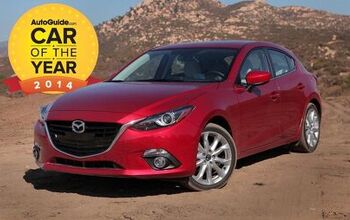
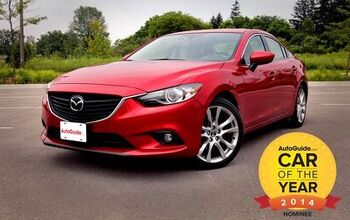
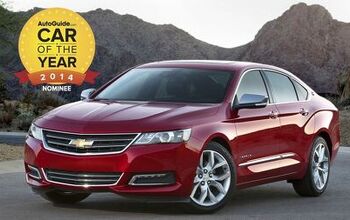

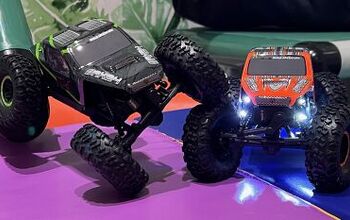



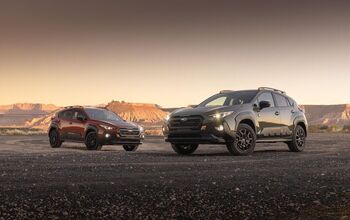





Comments
Join the conversation
ive owned them all with the exception of anything with a japanese or chines name. Withojt a doubt the best truck i think i ever owned was my old dodge with the cummins diesel , thats the best motor ever made , the milage was excellent and the upkeep no different than anything else . The 06 duramax i had i sold because chevy kept jerking me around with issues i had, the ford 150 i own now is still running good but has some issues that ford wont own up to. Its like a game with these guys , sure you got a warranty , but they just wont admit that anything is wrong with it or "they couldnt duplicate or recreate the issue"! All a brand name has to do is give goo warranty service and i will keep coming back. I was a chevy man for years , cars and trucks but after my last run with the duramax , i'm through with them. Right now everything i own is ford , and they are on thin ice.
No titan because they are waiting for 2015 year. The newest titan they have is the 2013. Wait till the new titan comes out. Bey big 3 and bye toyota. When the titan first came out in 2004 it was better than the big 3 the lowest trim titan could tear aparta sSilverado ss in 0-60 and 1/4 mile. And it had less horsepower and tq. Nissan has built trucks since the 1950's. So don't say they don't have any experience with trucks. Eff you boast big 3 guys.